| It's been unusually hot weather this month, which has brought a few issues with some regular customers guitars, who have popped in to have their guitars checked over to make sure they're fine during the hot weather! We've been busy as normal, with some really interesting guitars and repairs through this month, here's a few of the guitars that didn't have a detailed blog post to themselves. I almost wrote about a lovely vintage Levin that was brought in for a setup, complete with individual adjustable saddles! |
|
0 Comments
Photos showing the plugging and colour matching of the old holes, with the new ones then drilled and the pickup surrounds refitted.
This lovely 1970's Fender P-Bass was in the workshop for a restoration, after not being used for several years. It had previous been gigged hard and needed some attention in a few areas.
Some time in it's life, one of the tuner pegs had been lost, and replaced with a coin. This had worked loose over the years and so needed to be removed, the joint cleaned and then reglued with some stronger, longer lasting glue. The electronics also needed sorting, along with a setup including some nut work, before the bass was ready to be brought out of retirement! This lovely vintage Tokai Les Paul Reborn Goldtop was brought in for a rewire and pickup cover change, plus a recrown to bring it back to a playable standard after travelling all the way over from Japan!
The fretting process about to being, using traditional installation methods Once the new frets were installed, it was then onto levelling, then precision levelling under string tension, before the frets were crowned and hand polished to a shine! With the refret done, and no new nut needed, the guitar was ready to be reunited with it's owner!
We were approached by a customer who was working on an Epiphone Wilshire, he wanted a full stainless steel refret along with a custom hand made scratchplate. There was also a strong chance that a new nut would have to be made, as the new fretwire profile was taller than the existing frets. The first job was removing the old frets, this exposed a poorly fretted fingerboard, with a lot of tool marks left from the factory fretting. The board had to be filled with a special sawdust and glue mixture in a lot of places, before it could be sanded and prepared to take the new frets. Once the board has been prepared, the new stainless steel frets were installed. This was made slightly more challenging by the fact that the original frets tang had been cut short, with the ends filled and then finished with lacquer. This lead to the board having to be refretted like a bound fingerboard, but with the edges more fragile that a bound edge board. With the frets installed, the were trimmed down to size then levelled, and with the neck under string tension, the frets were then fine levelled again to ensure 100% level frets. Once the frets were level, they were then recrowned and hand polished to a smooth shine. The work was completed with the board having a much needed lemon oil treatment! As suspected the new taller frets meant that a new nut would be needed, this would be a hand cut bone cut, a noticeable upgrade over the old plastic one. Below is some of the steps of making a new custom hand cut bone nut. Using the old scratchplate as a template, the new one is hand cut to an exasct match, well almost, as one of the tone controls was deleted, to make the scratchplate more like the old Wilshire models. With all the work complete, the guitar was strung up and given a rough setup, the customer would final set up the guitar to his liking after fitting the pickups and electronics!
|
Lewis DurtnallHi, I'm Lewis, Ive been repairing guitars since 2004, I learnt my craft at Totnes School of Guitar Making! Archives
December 2022
Categories |

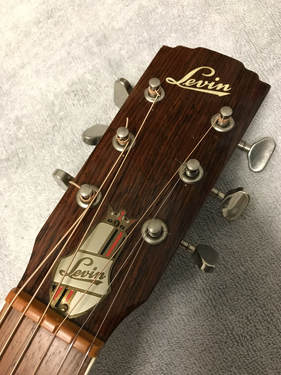


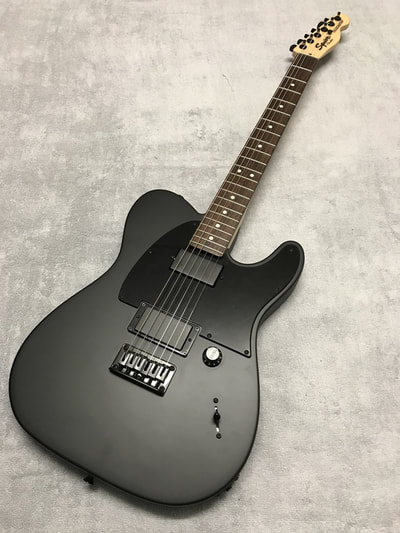

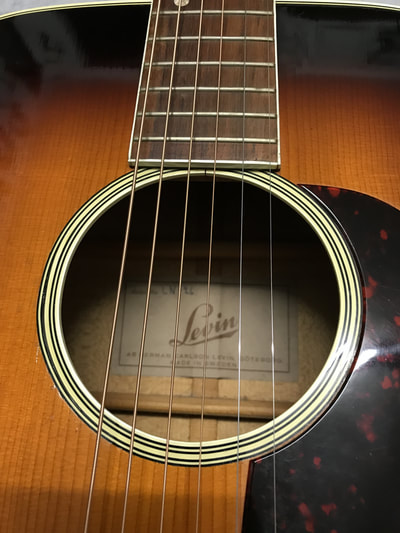
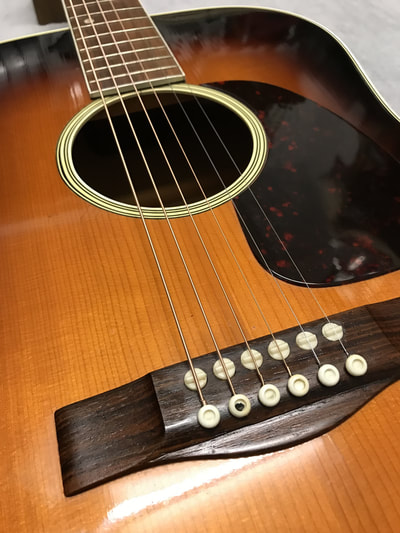
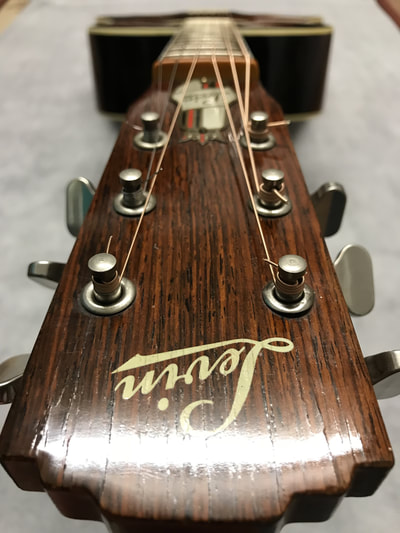

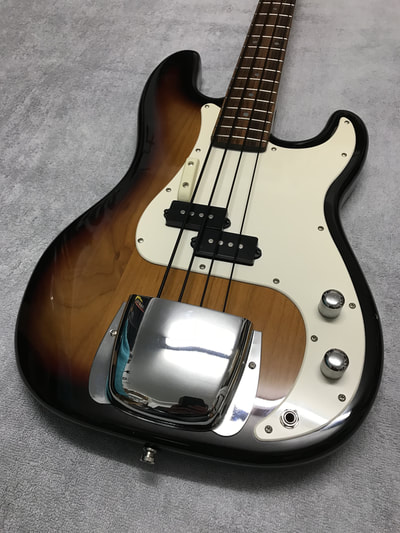


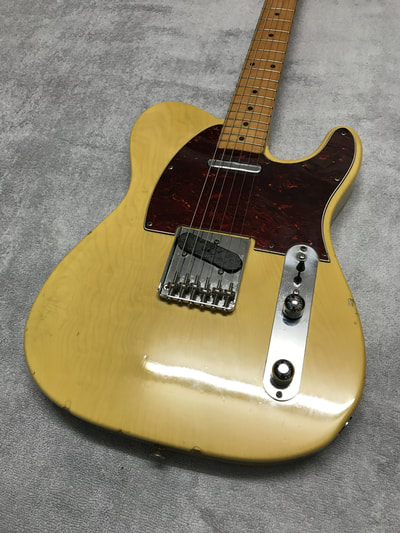
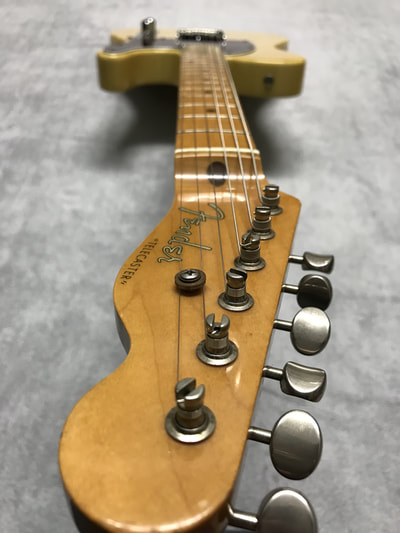

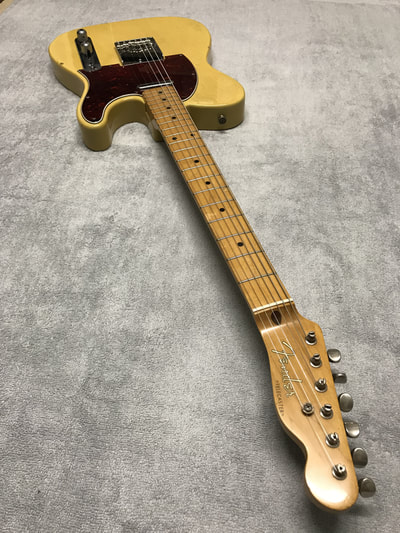
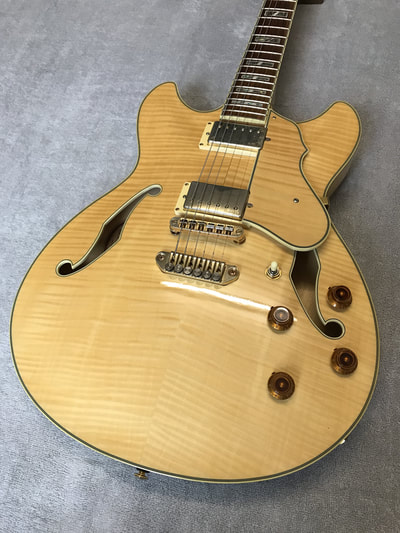



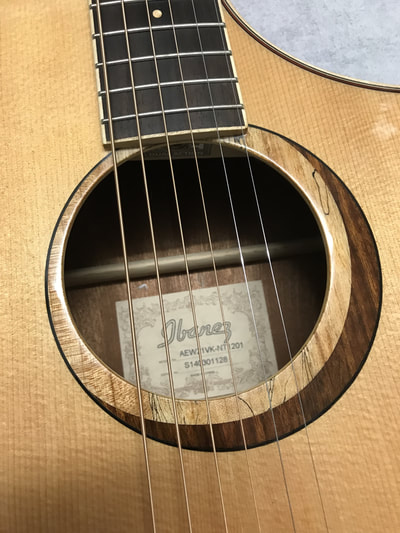
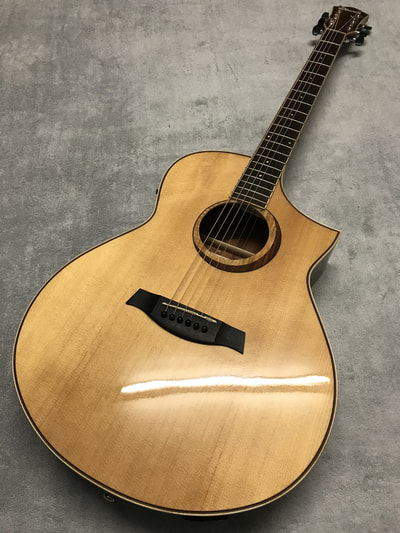

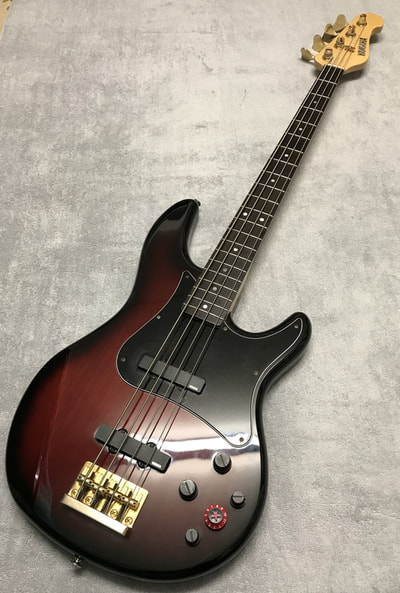

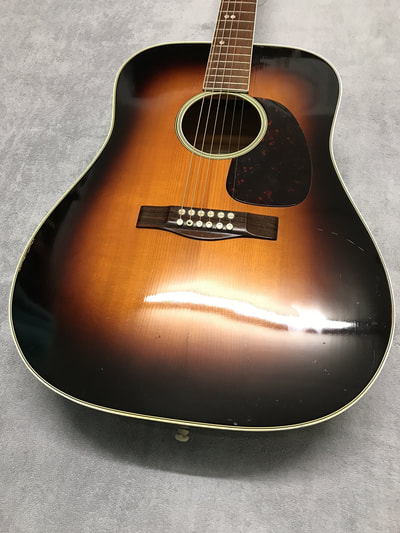




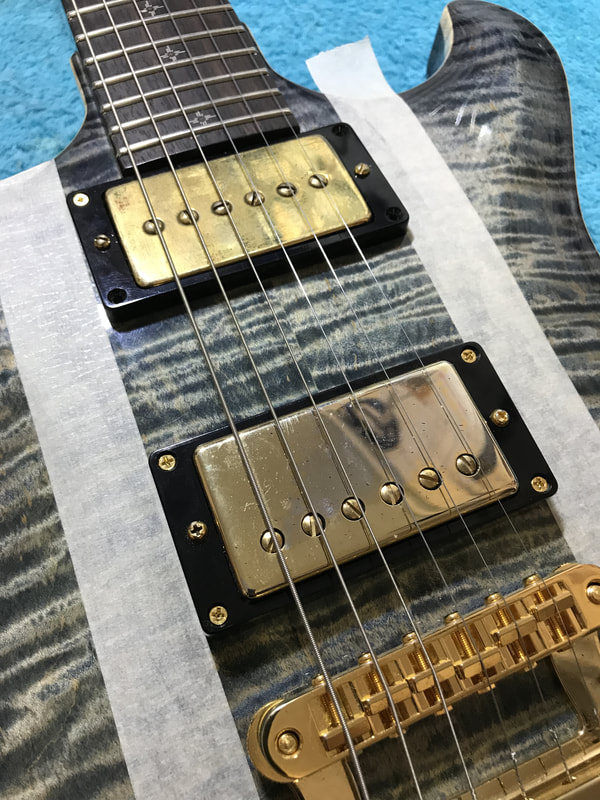
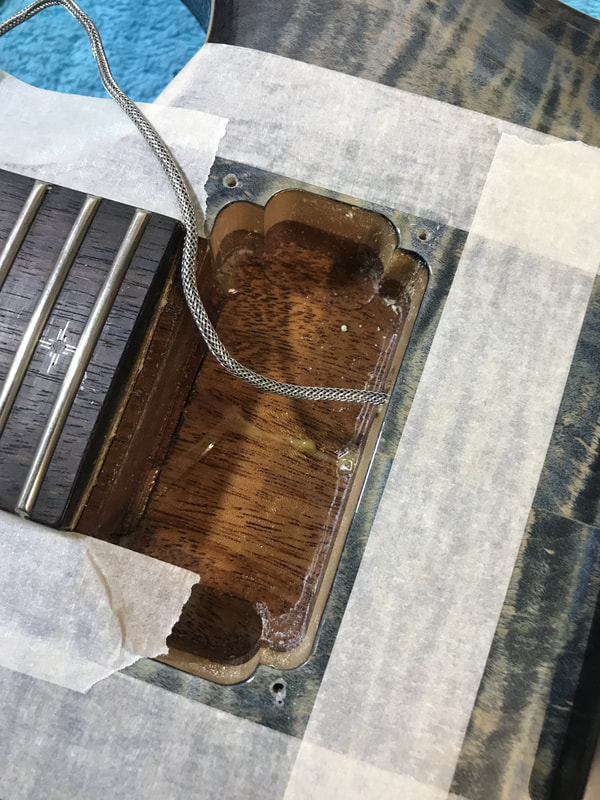

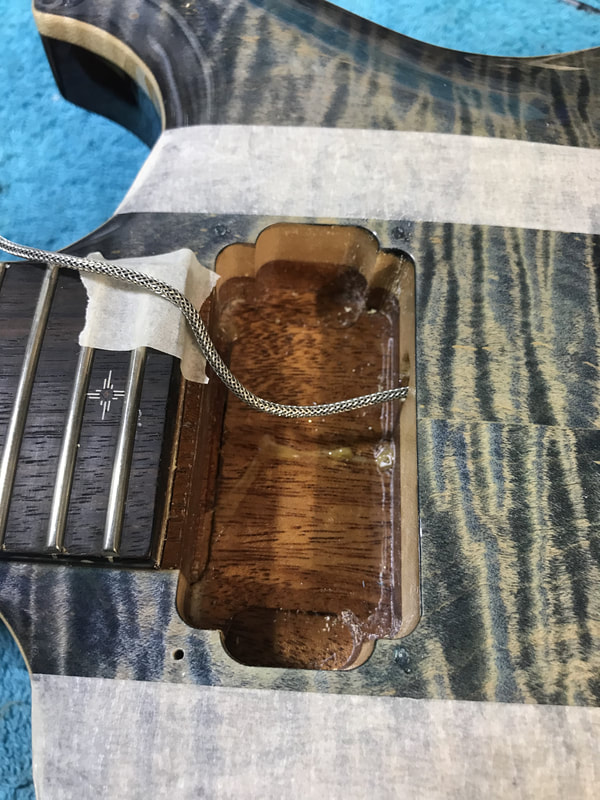
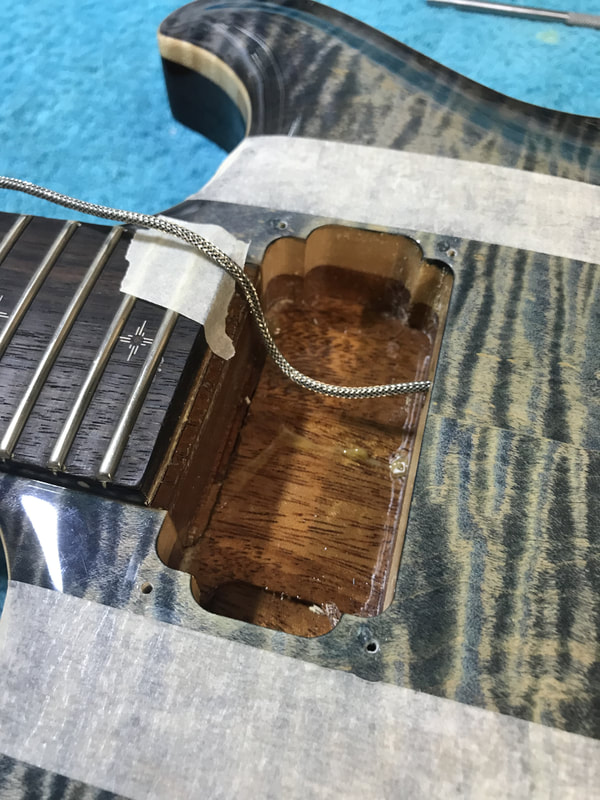

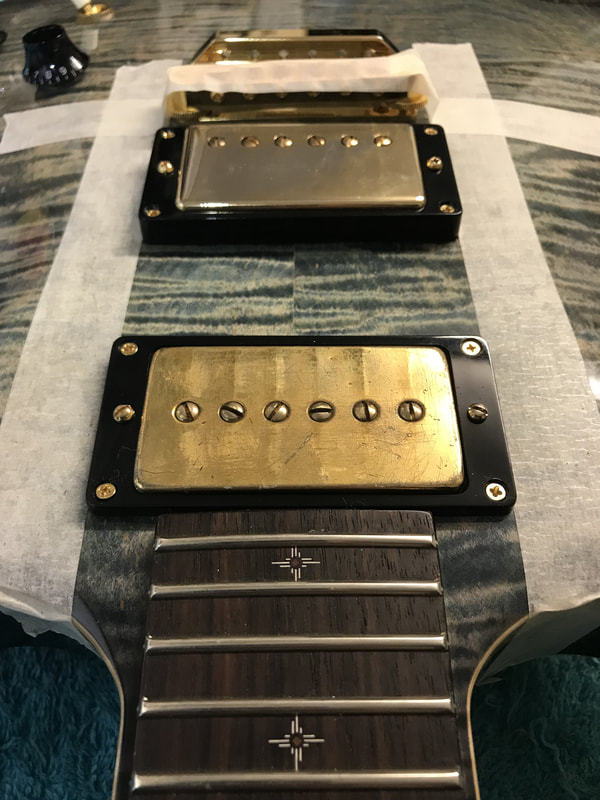
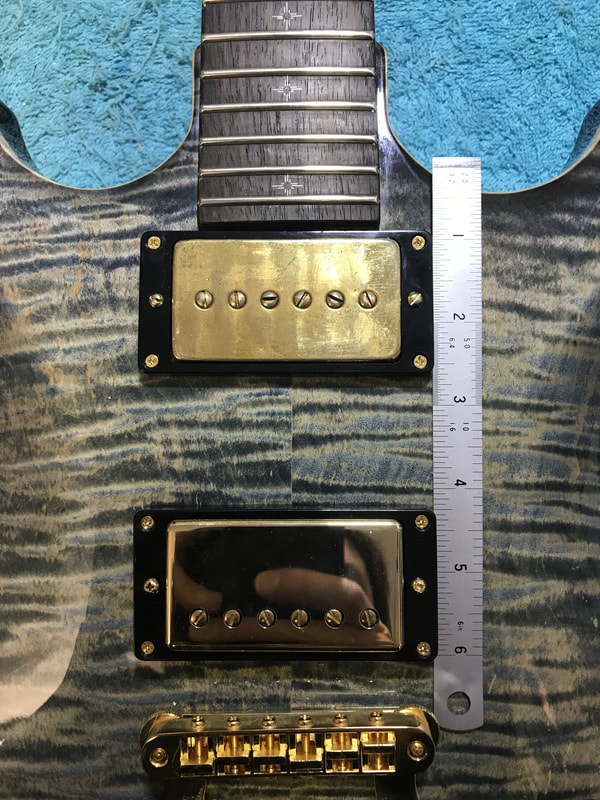
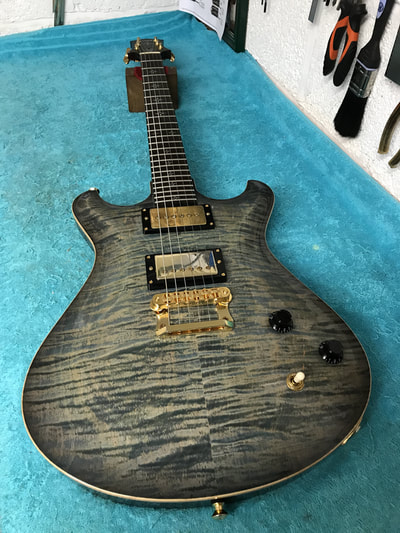
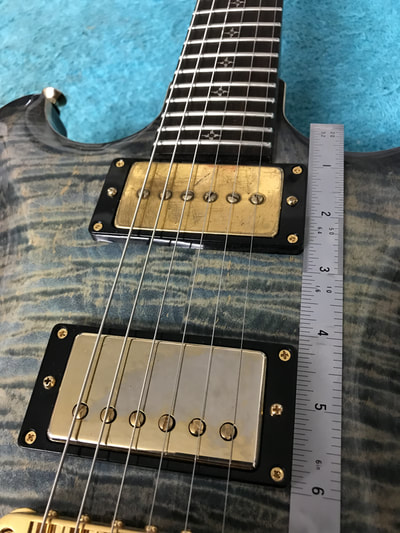


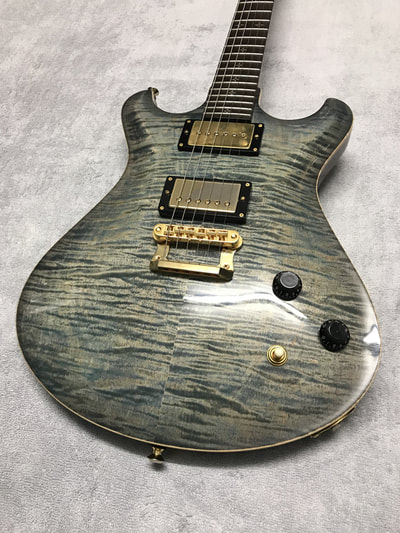
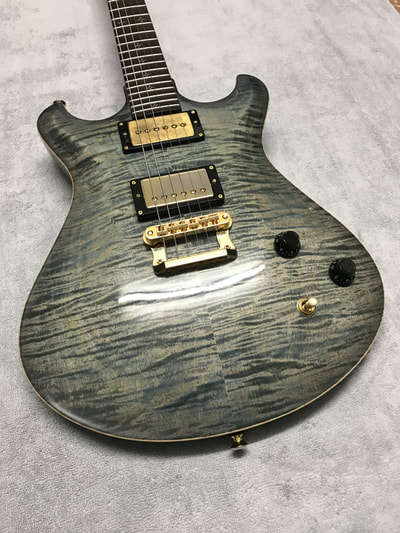
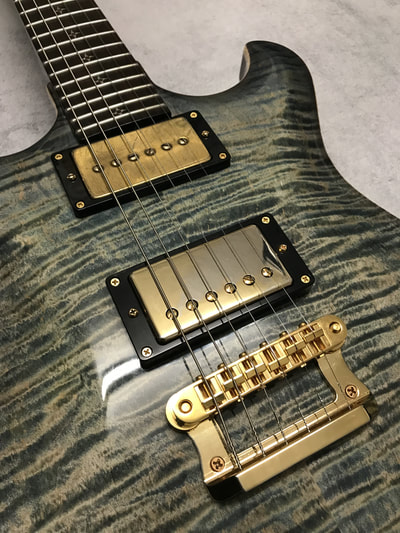







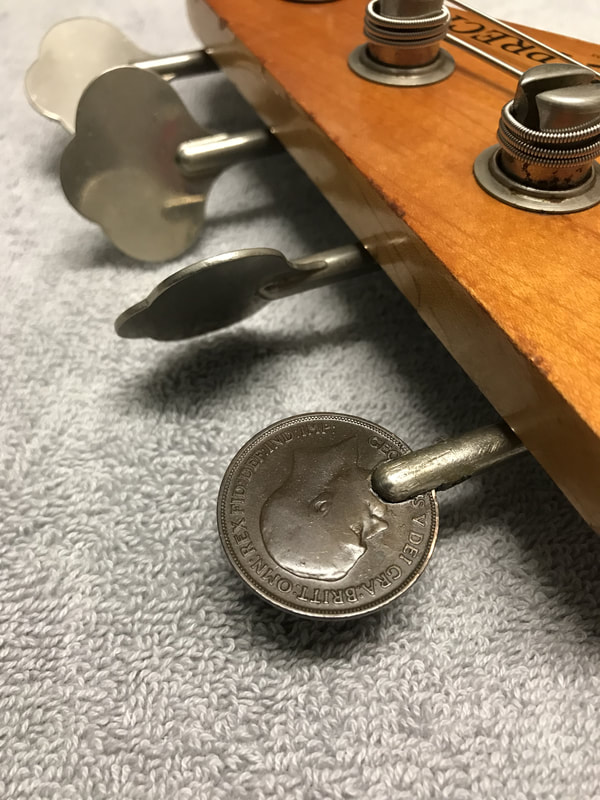
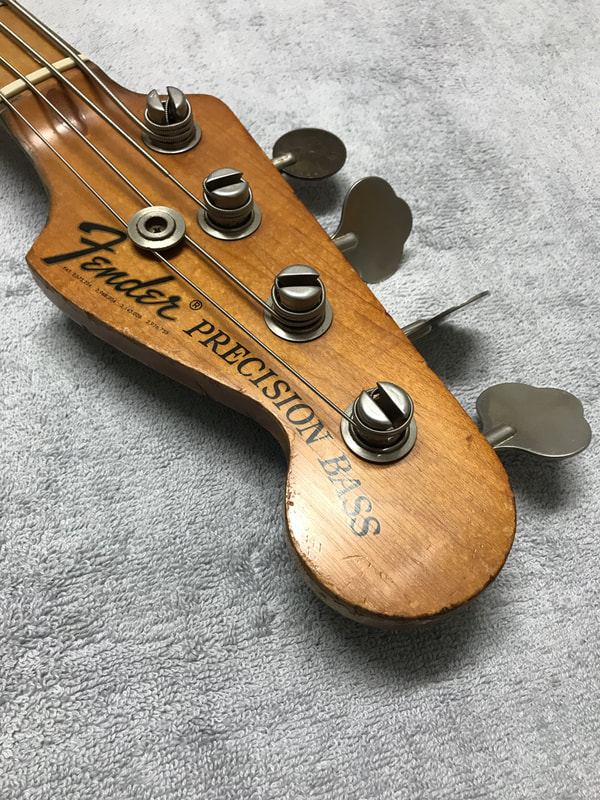


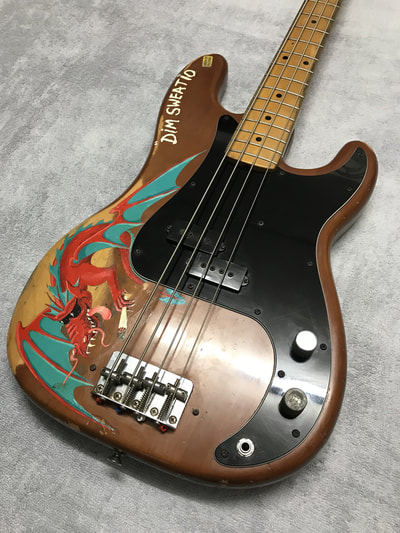
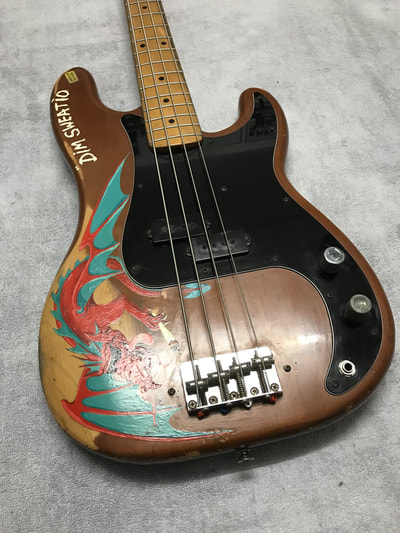

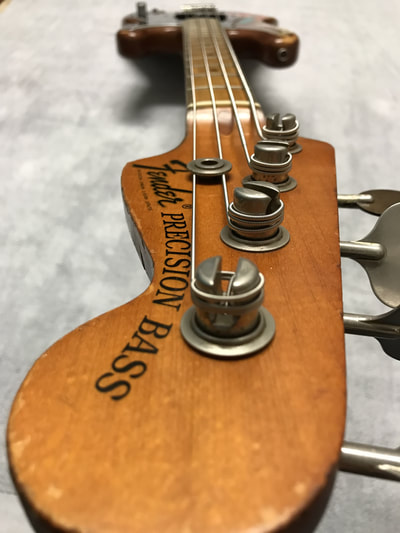

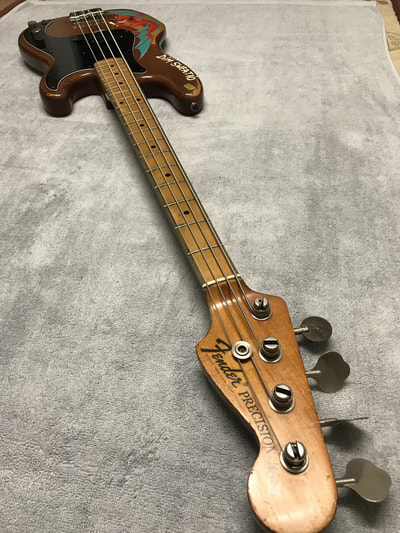
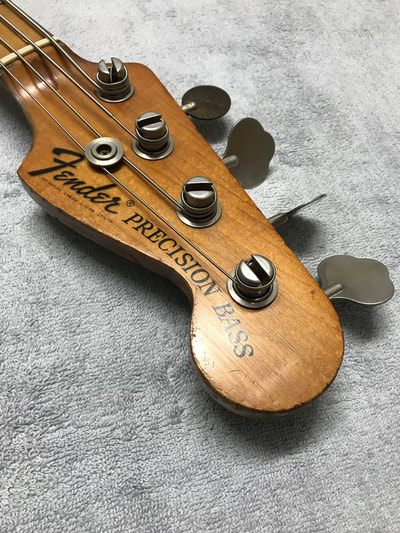

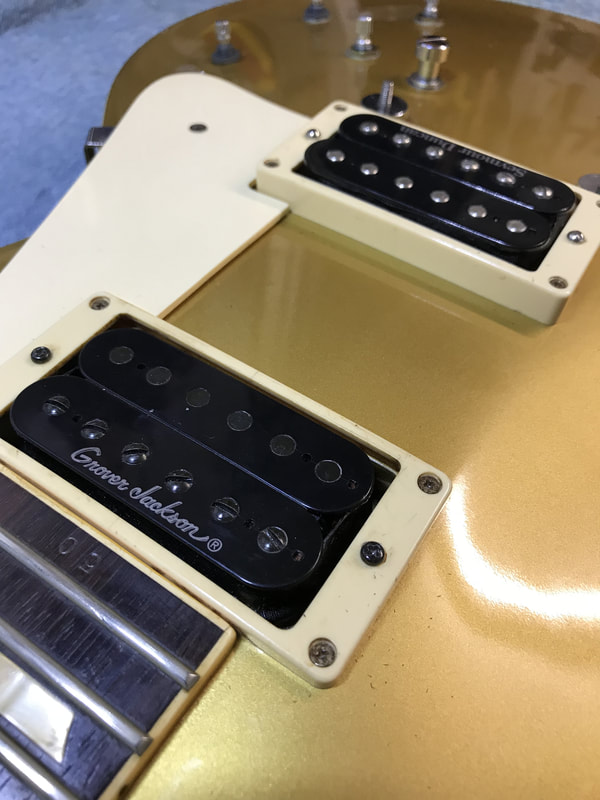






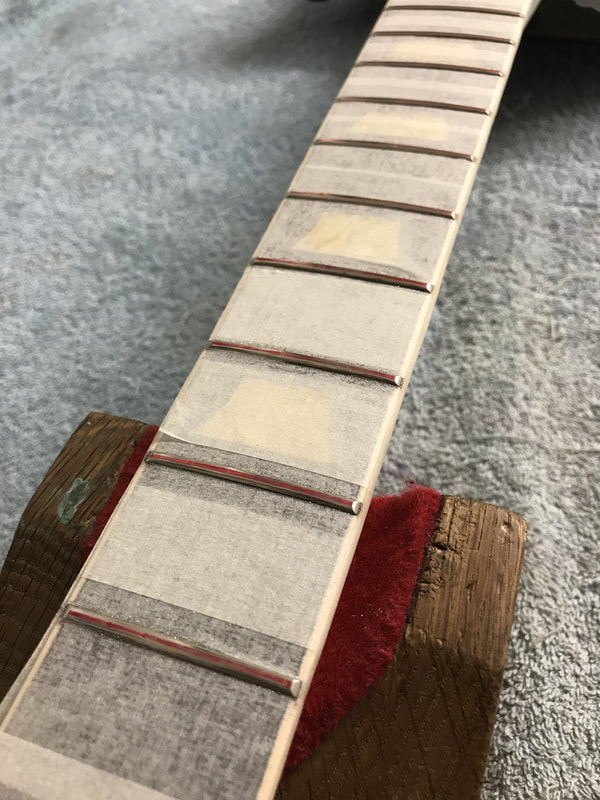
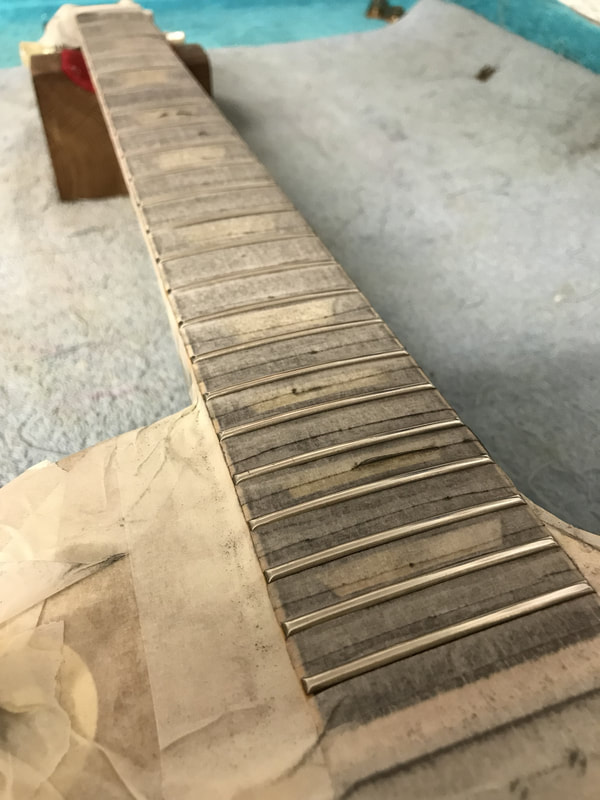
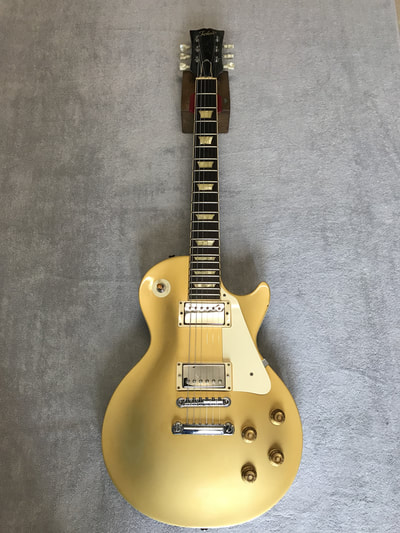
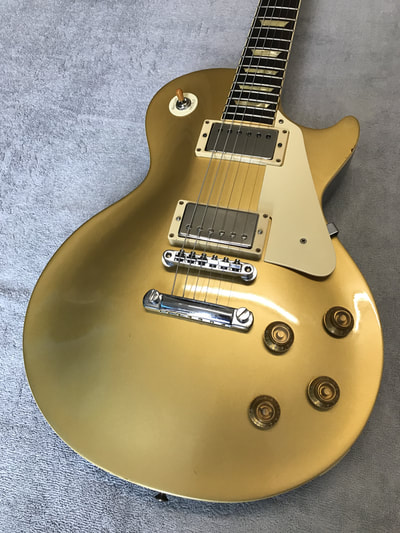


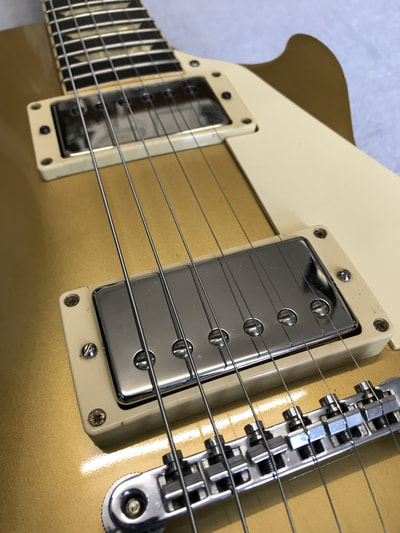
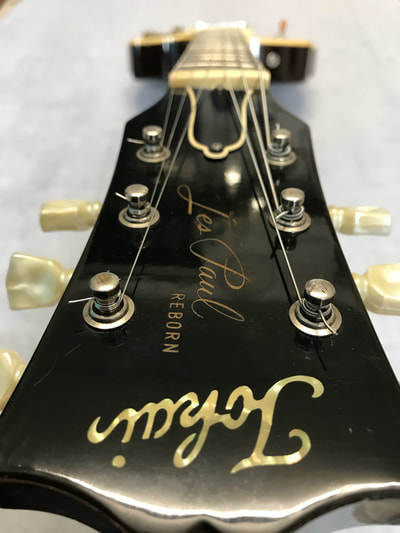
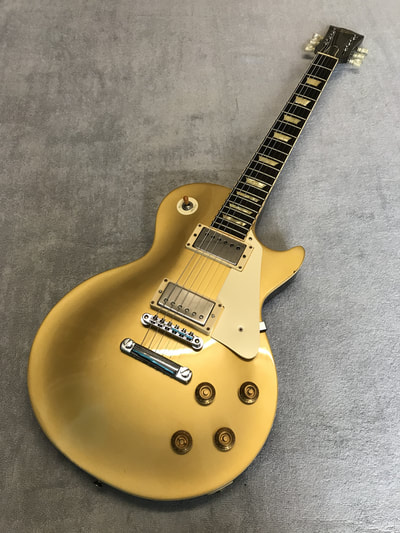

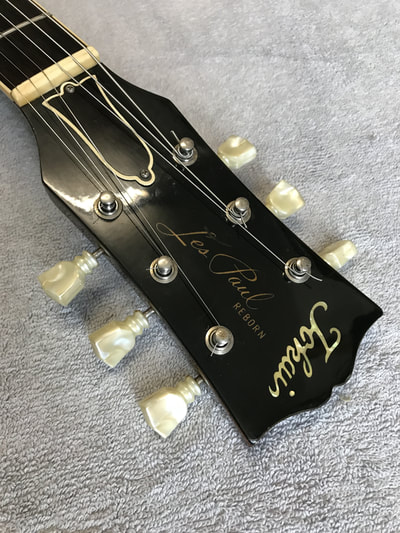
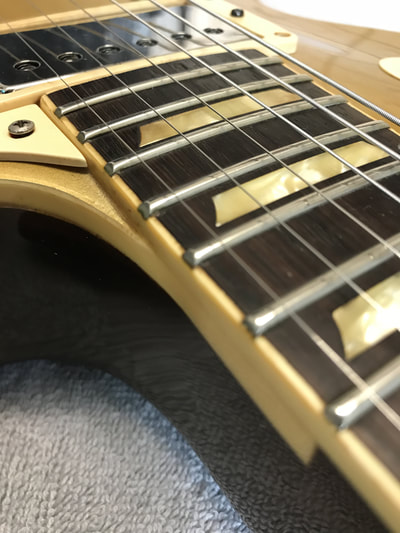
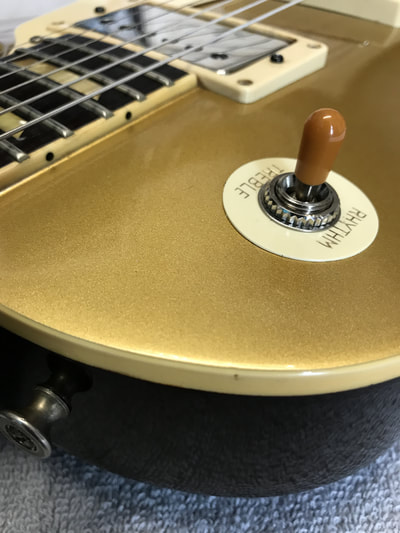




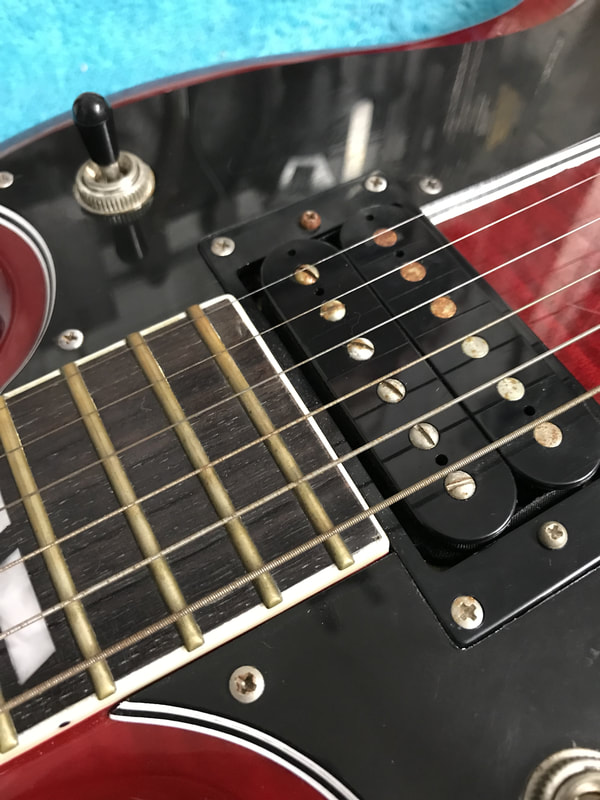
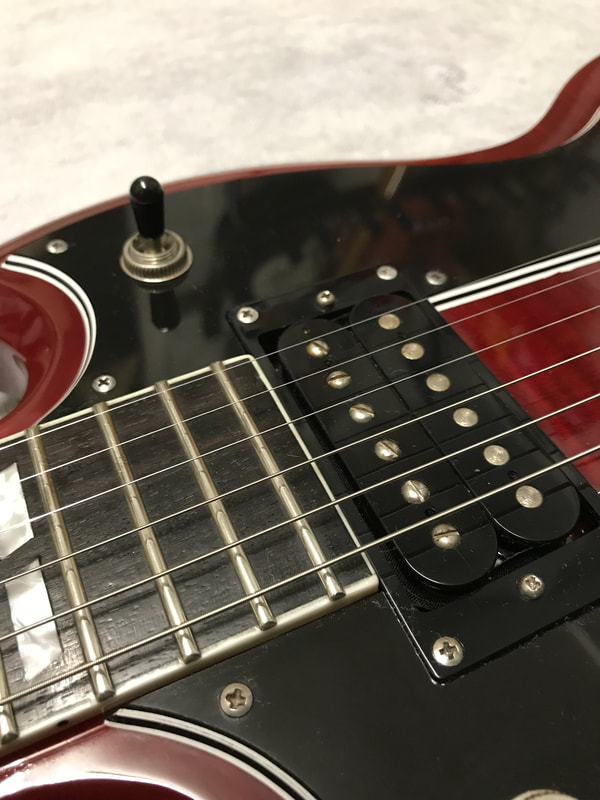
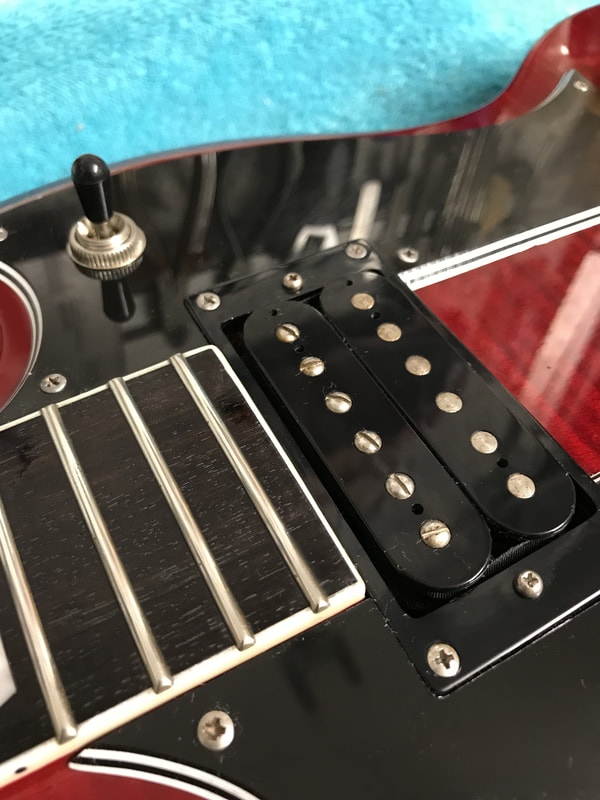

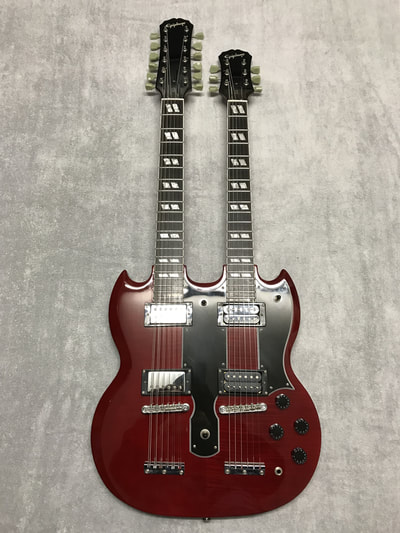
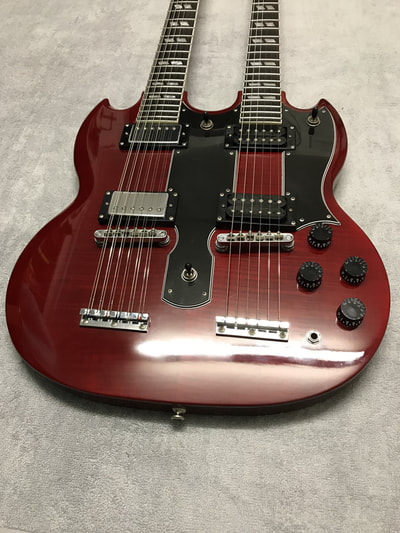
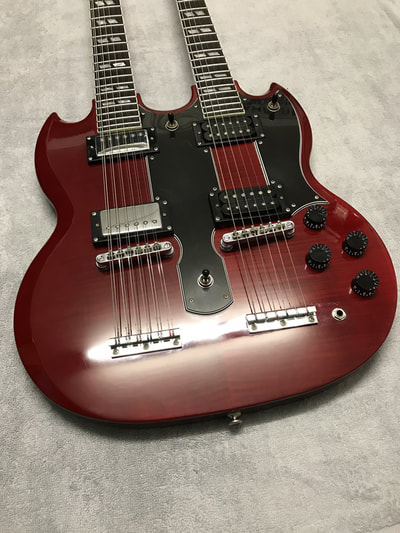

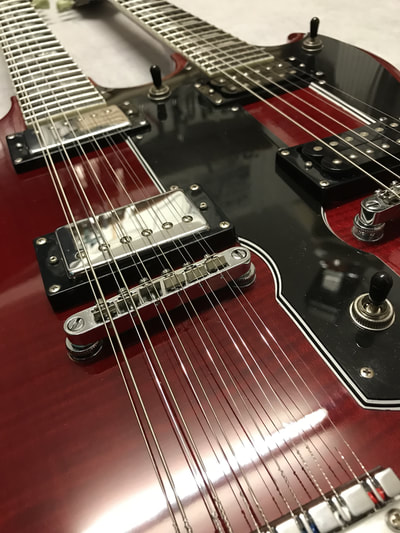

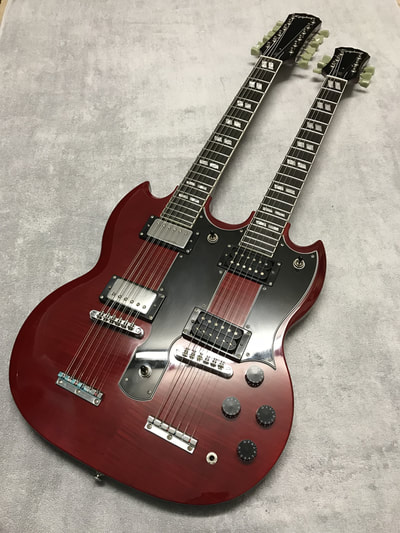
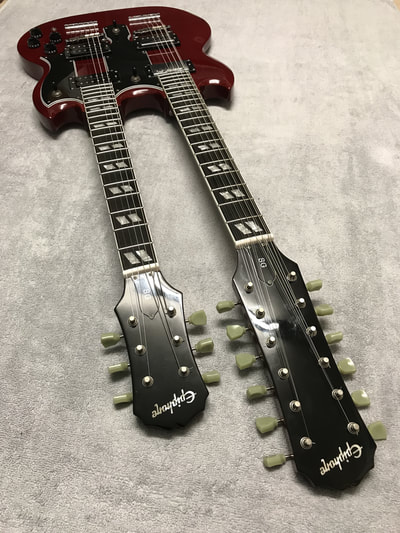
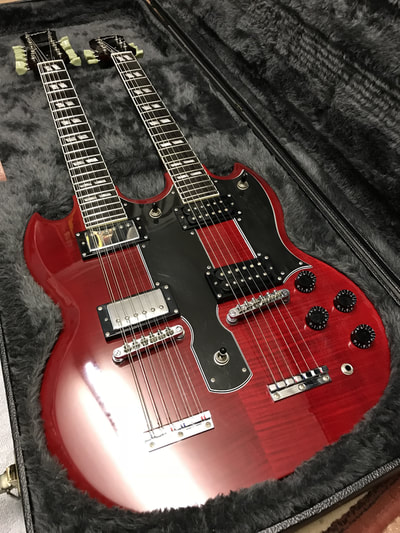
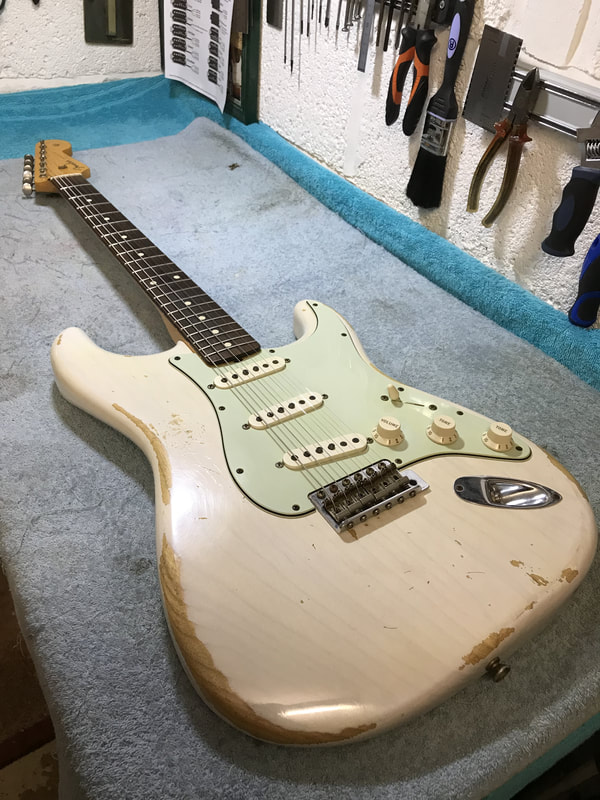


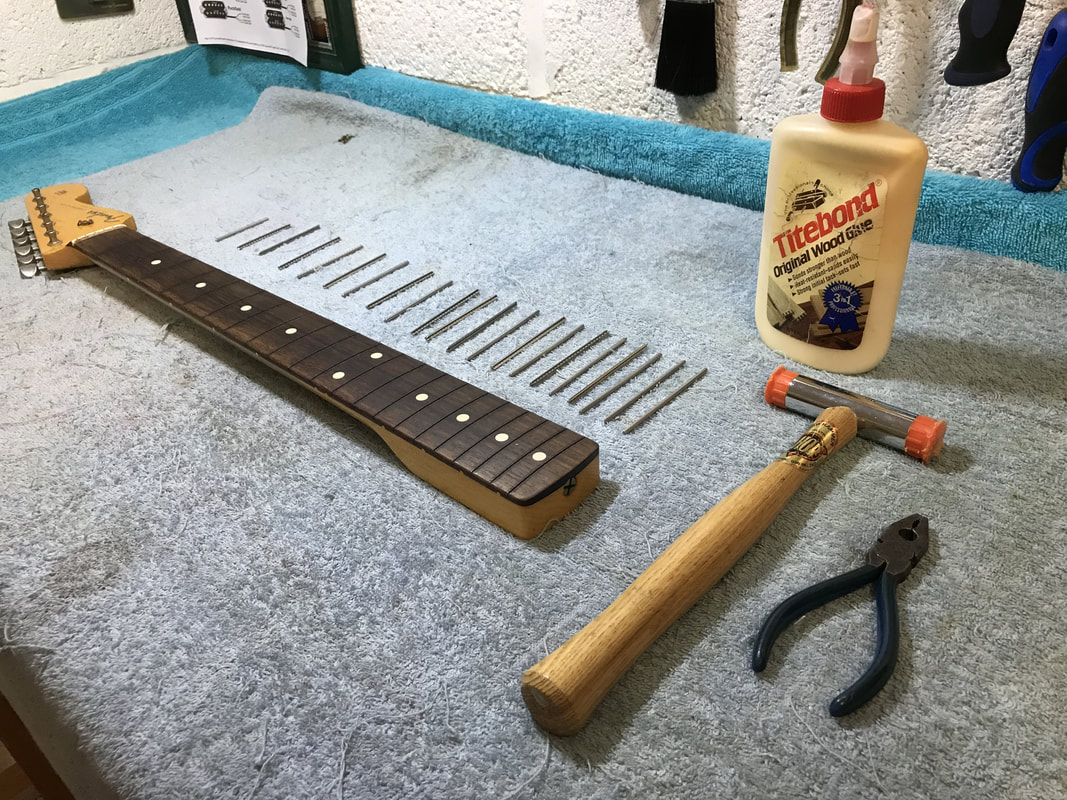
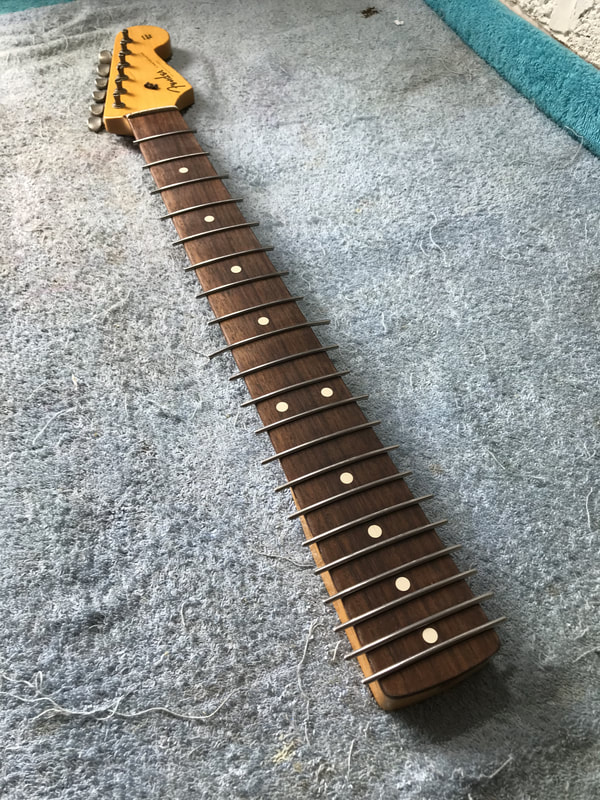
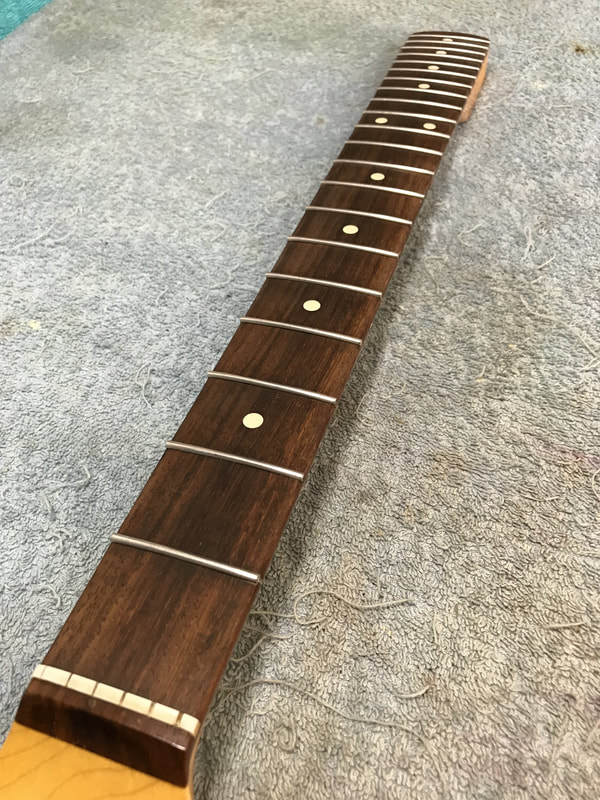


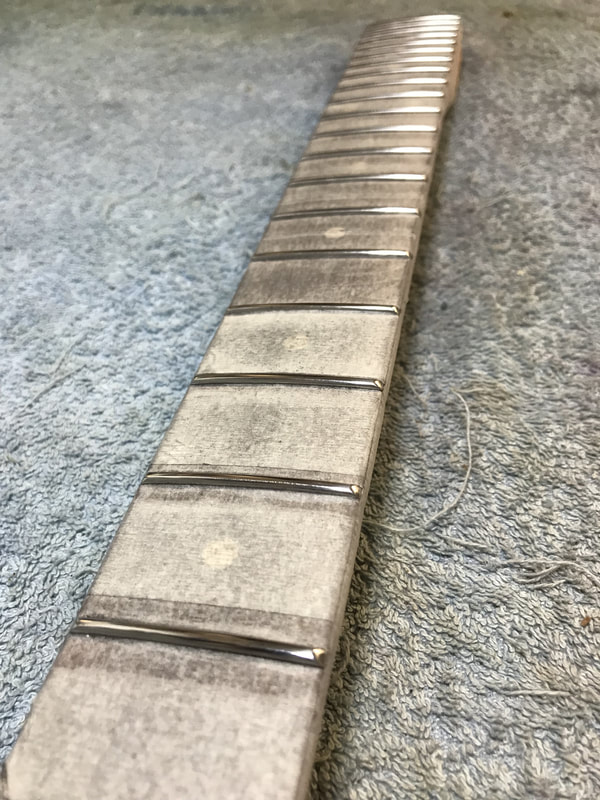


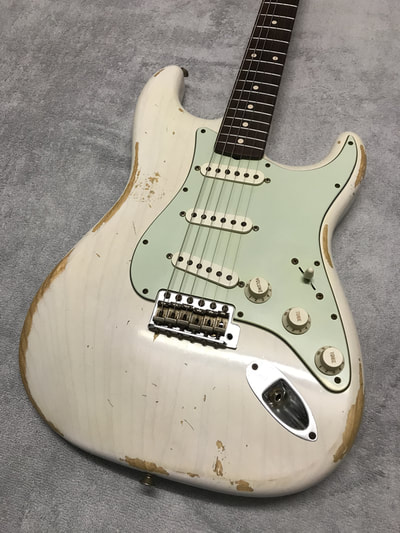

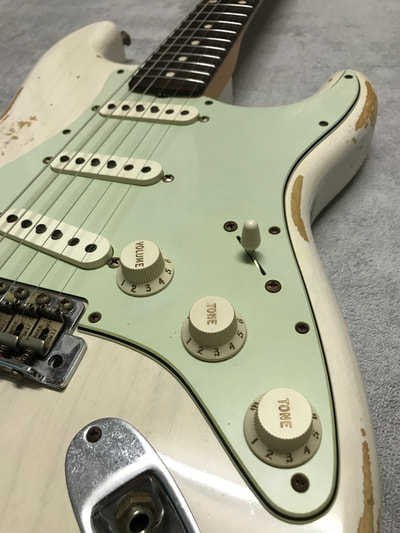
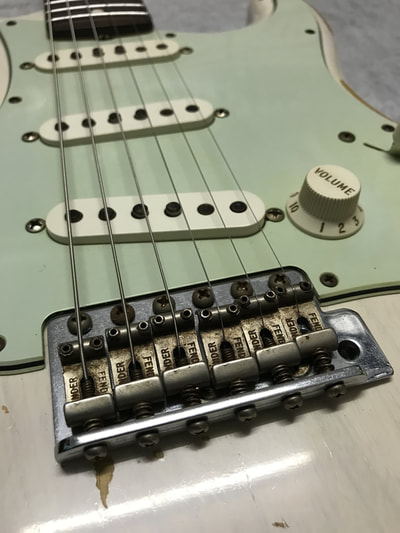
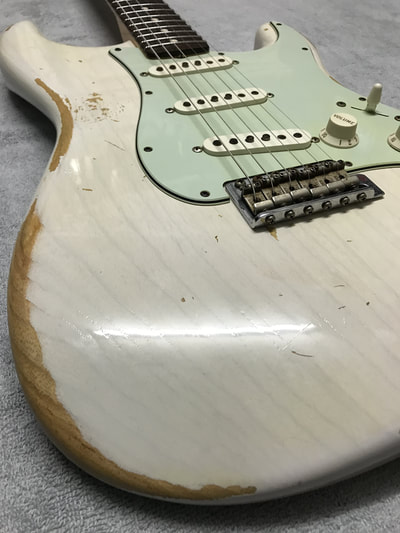
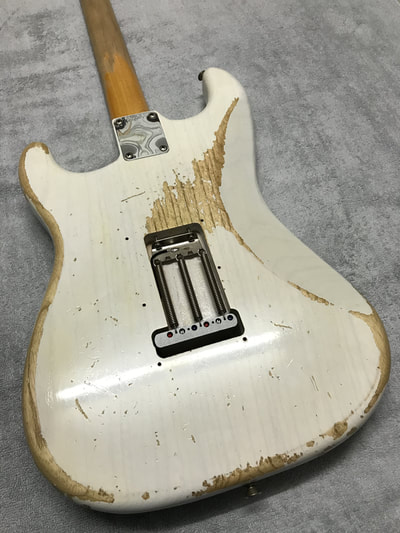
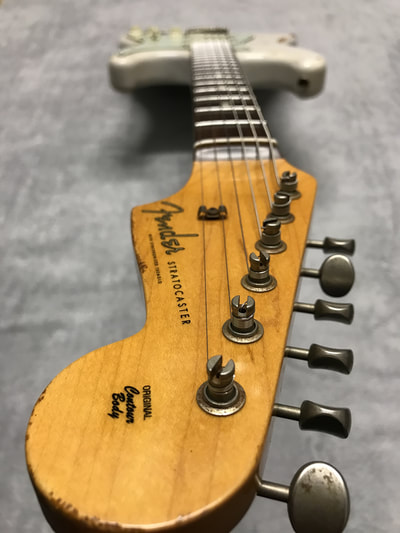



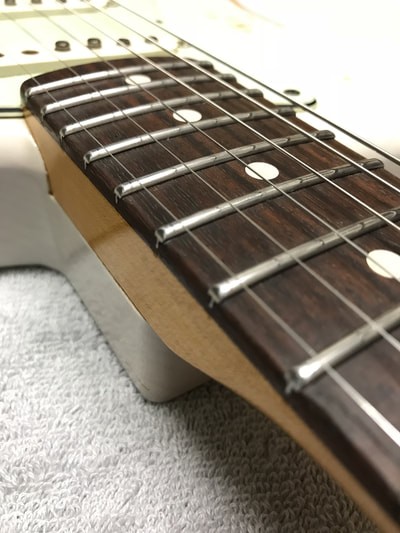
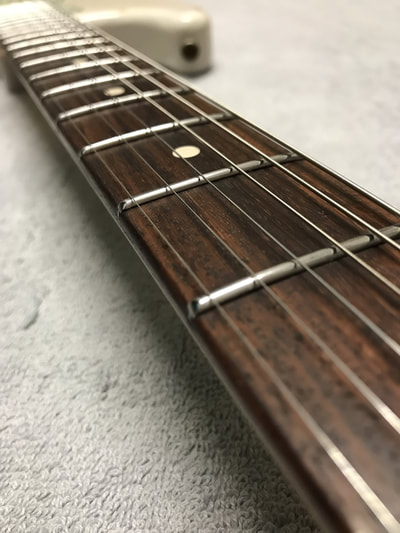

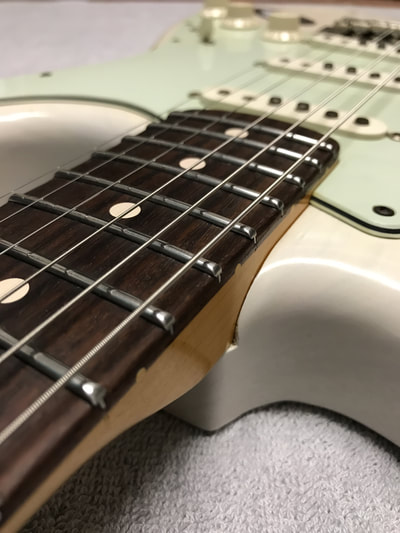



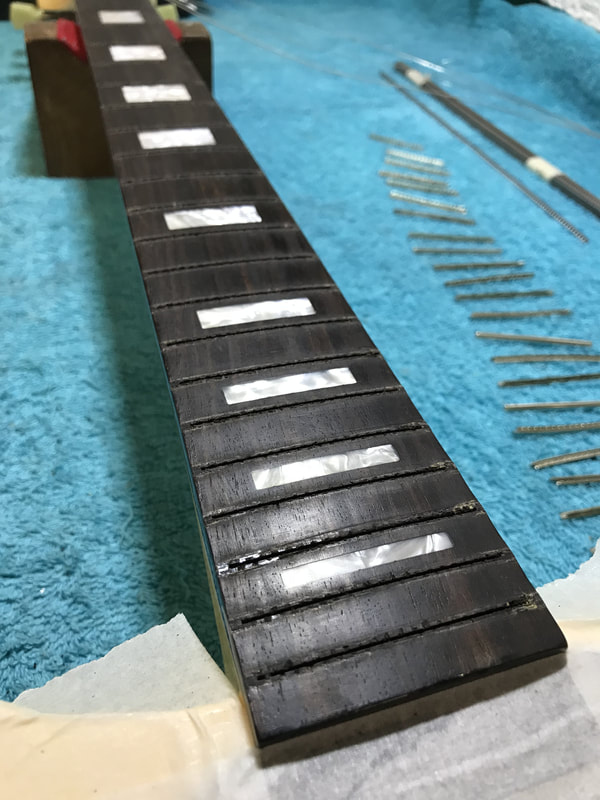
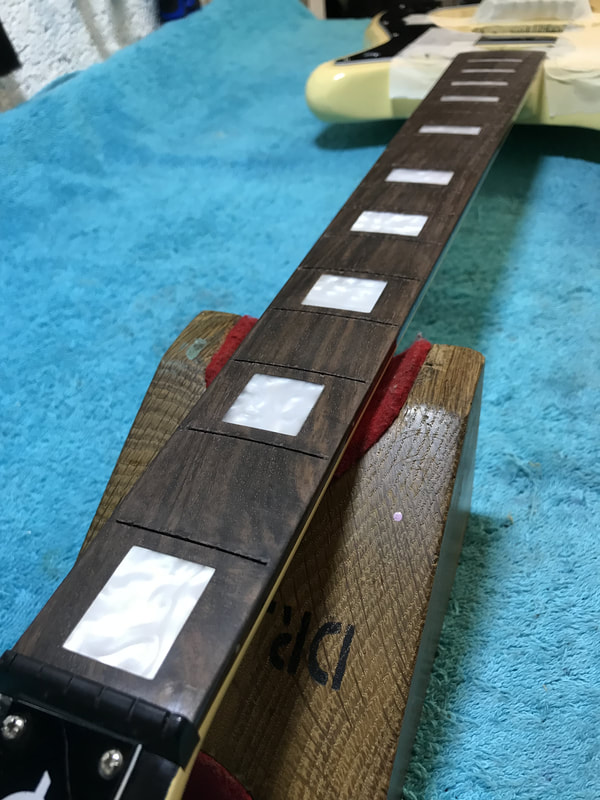
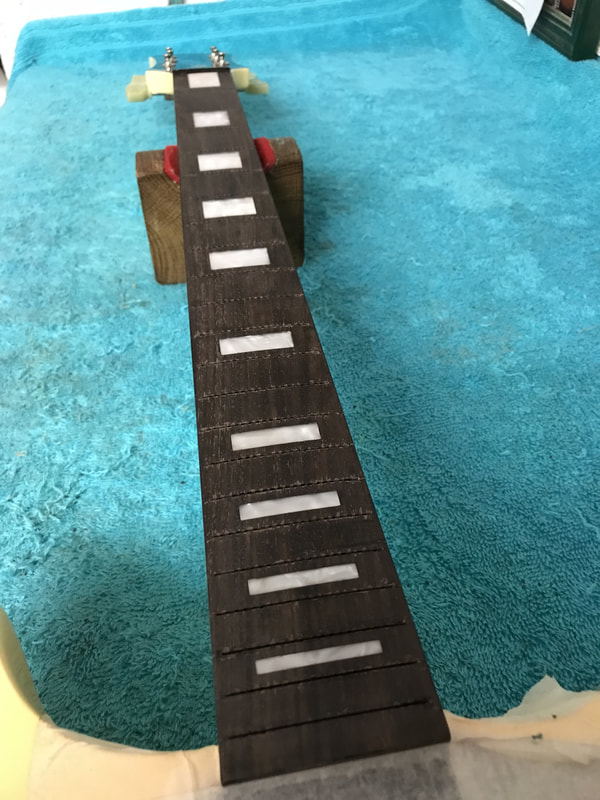
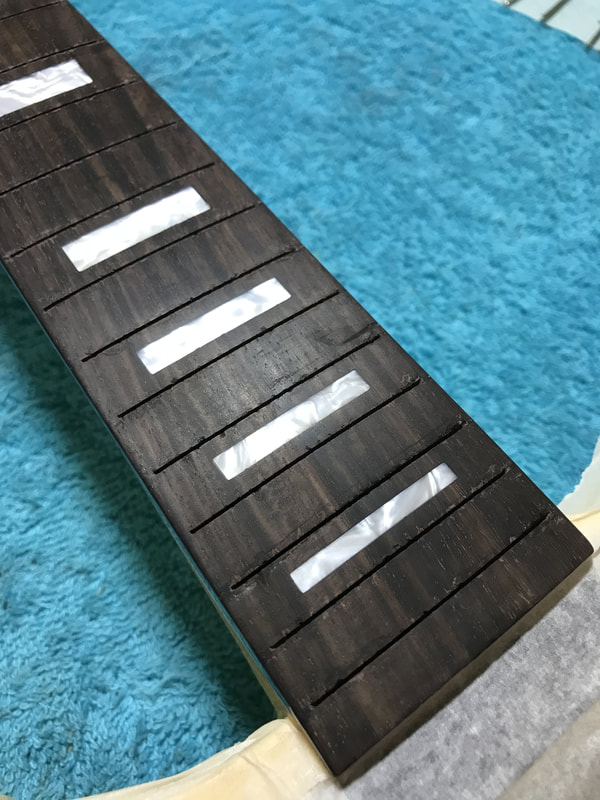

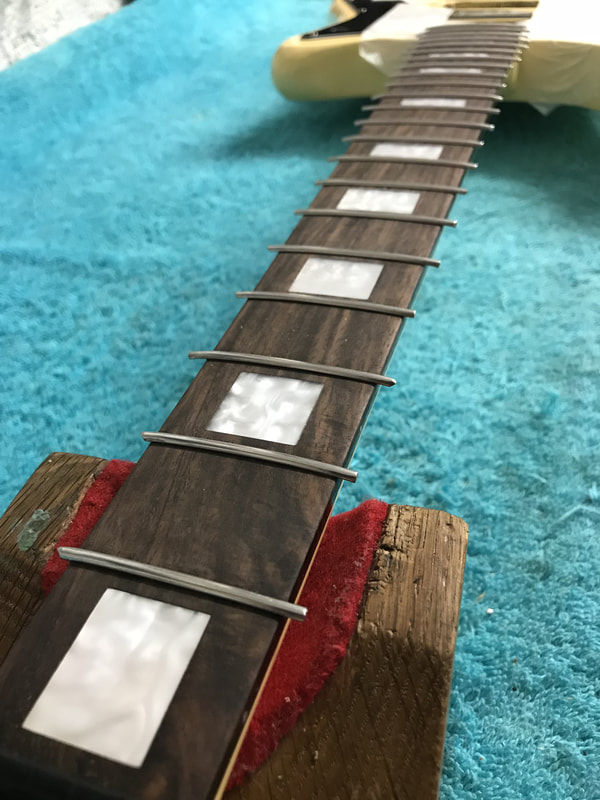
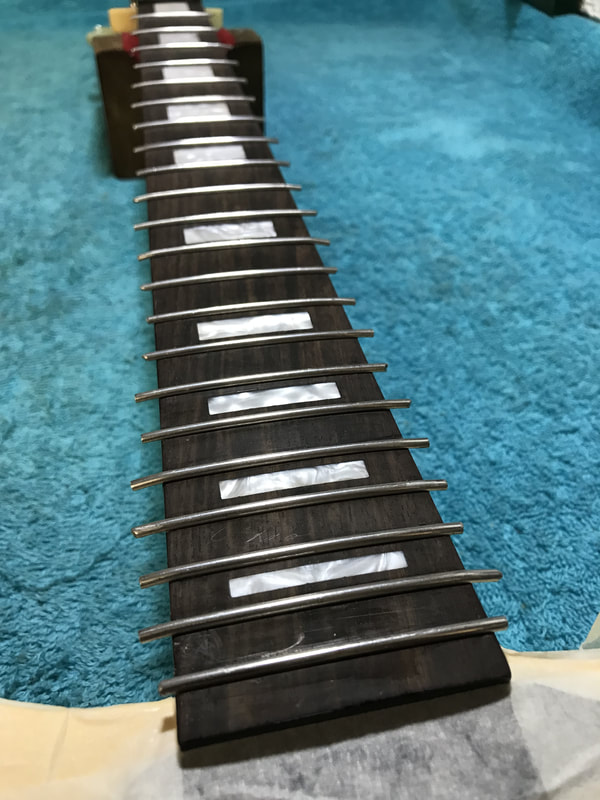
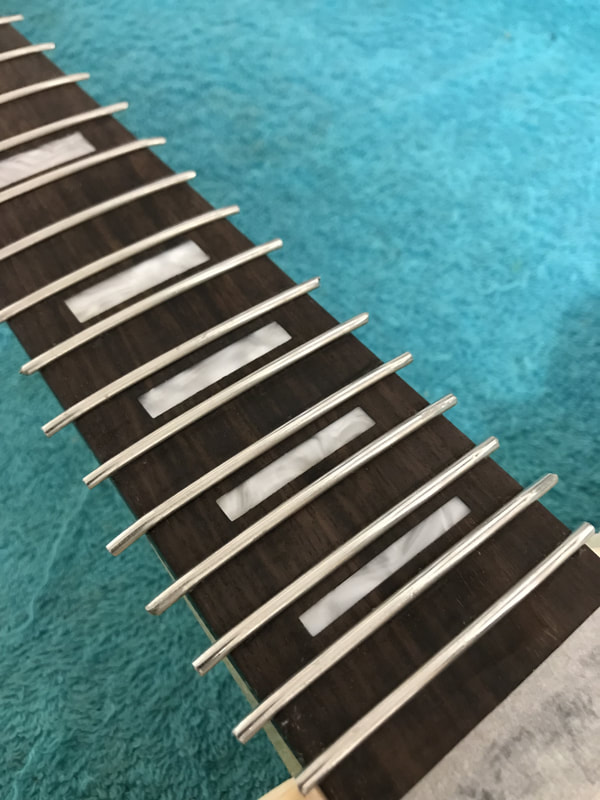
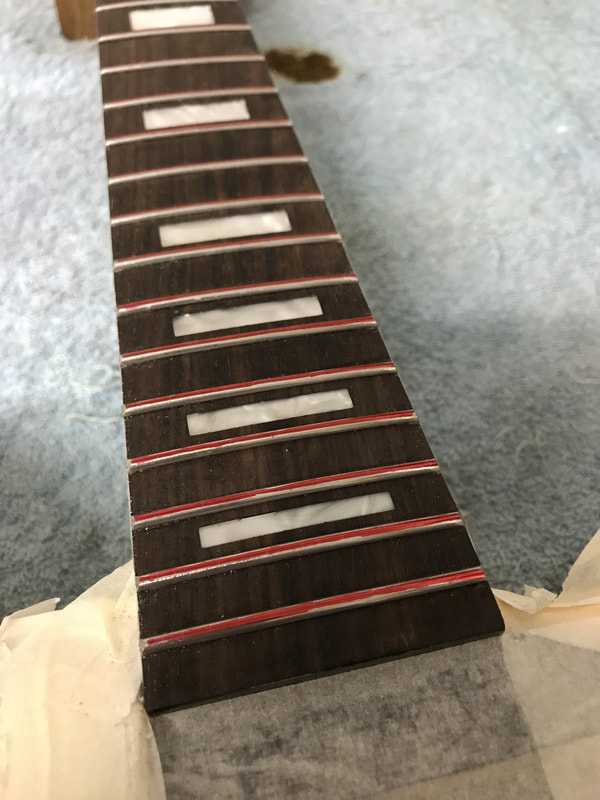
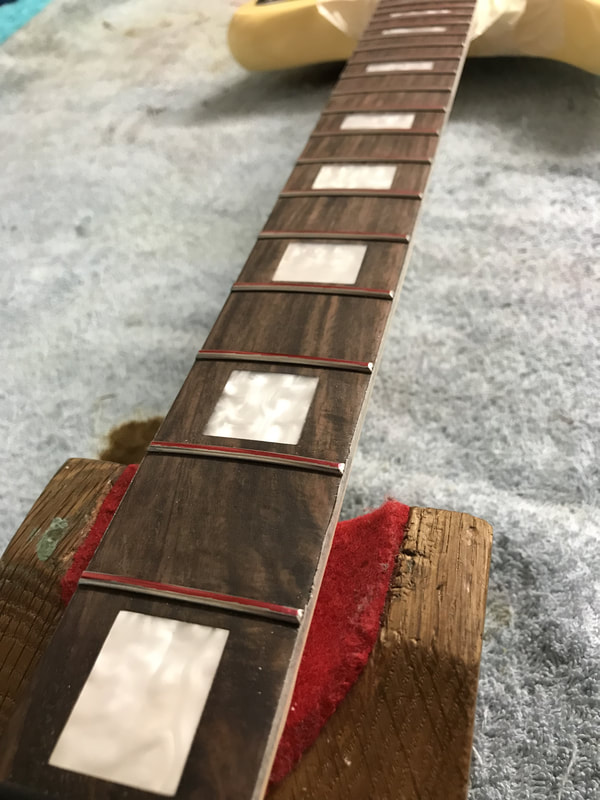


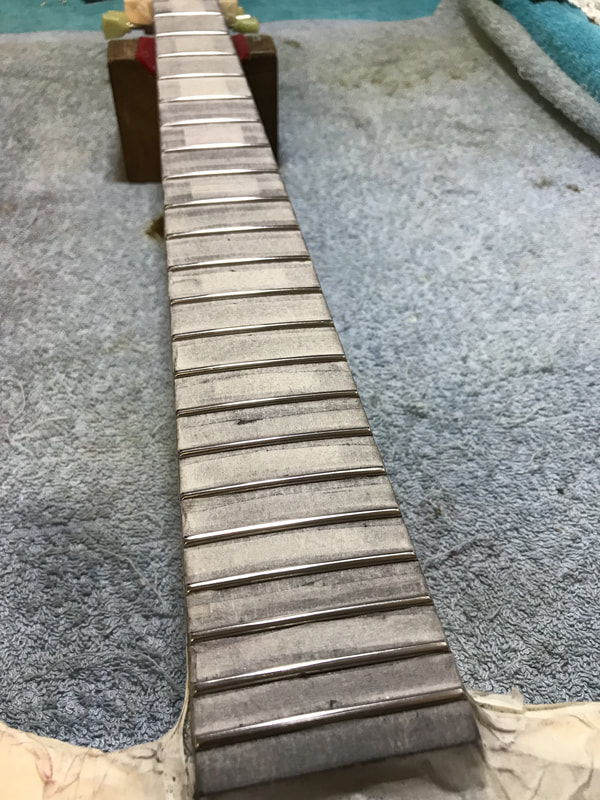
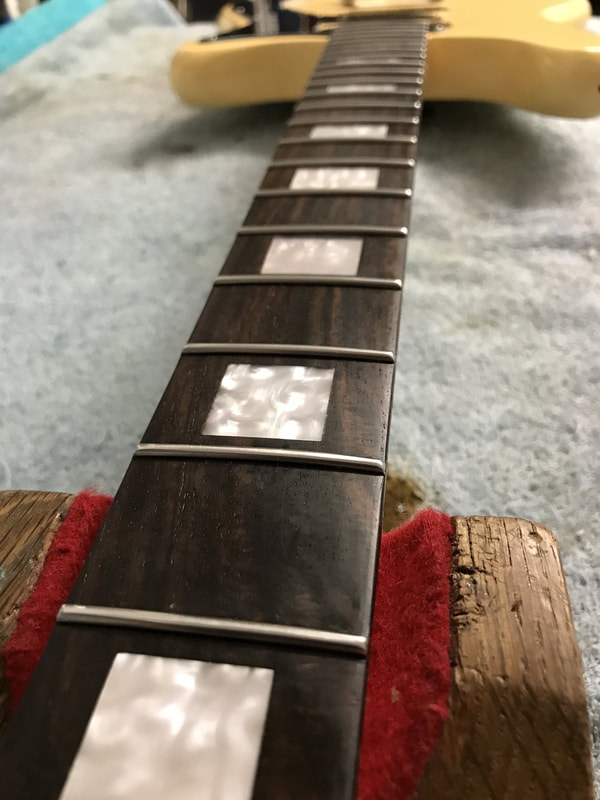


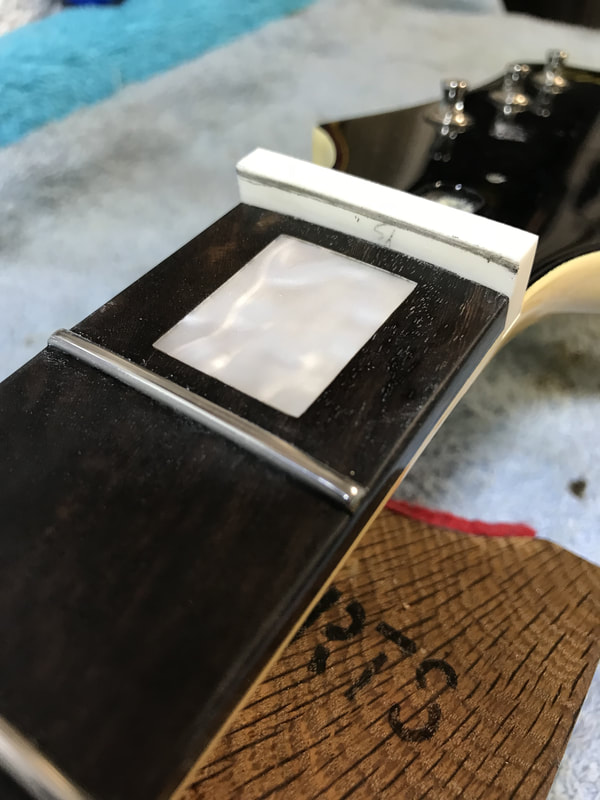

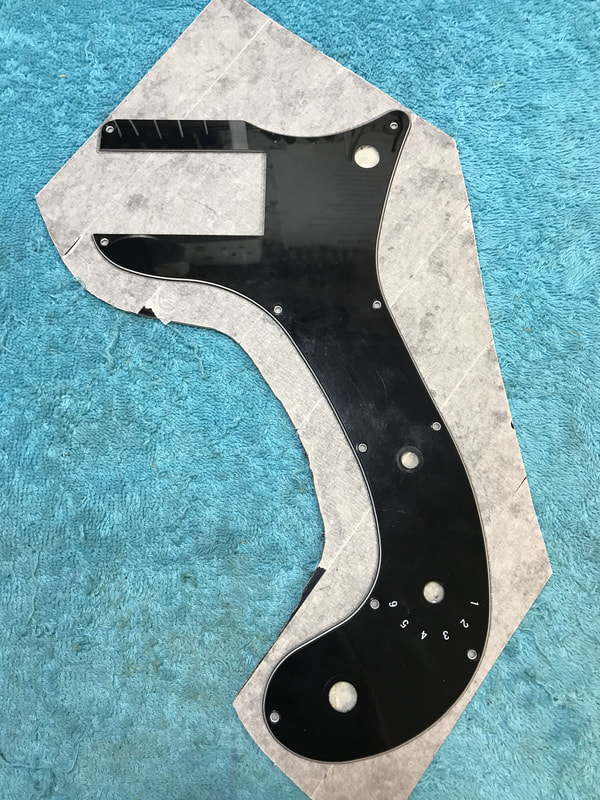
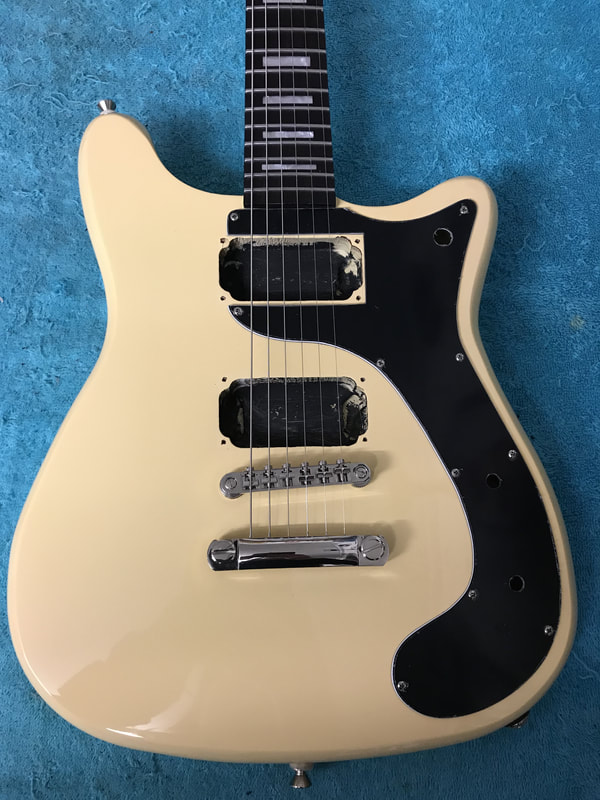
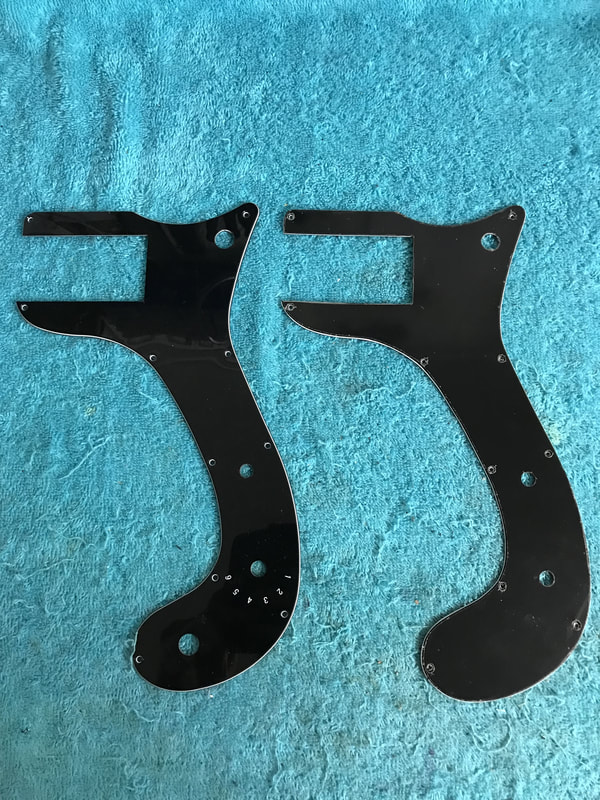
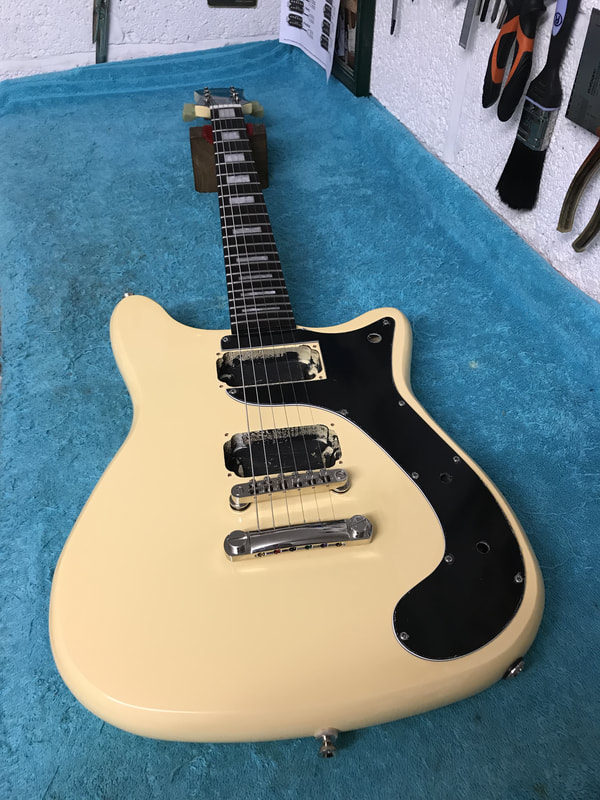
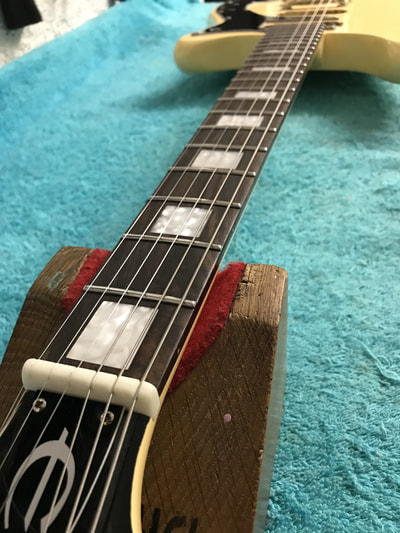

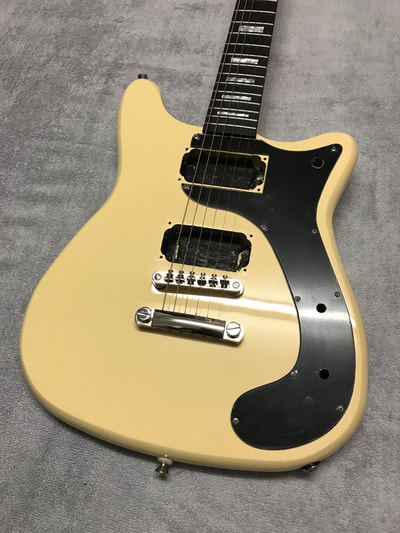
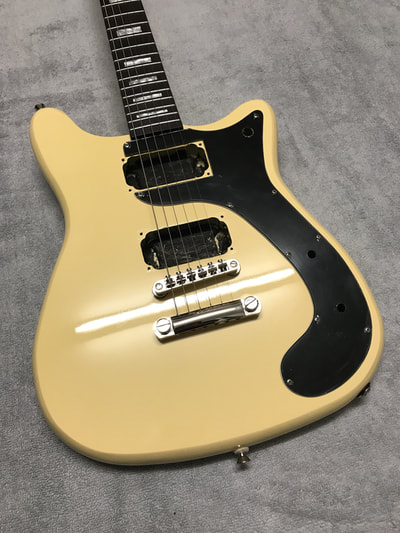
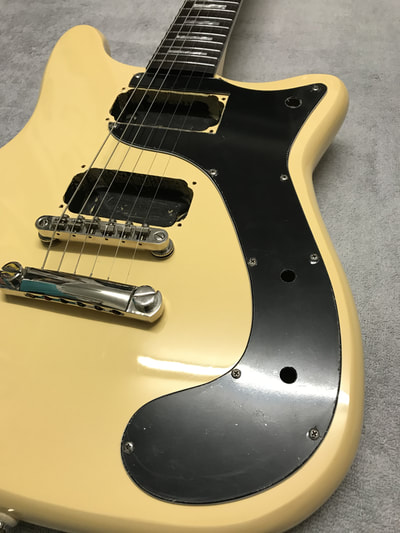








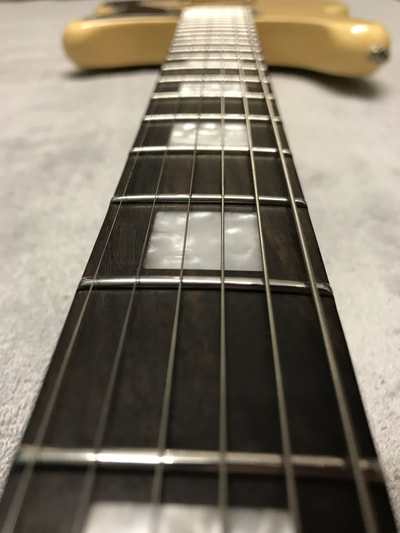

 RSS Feed
RSS Feed